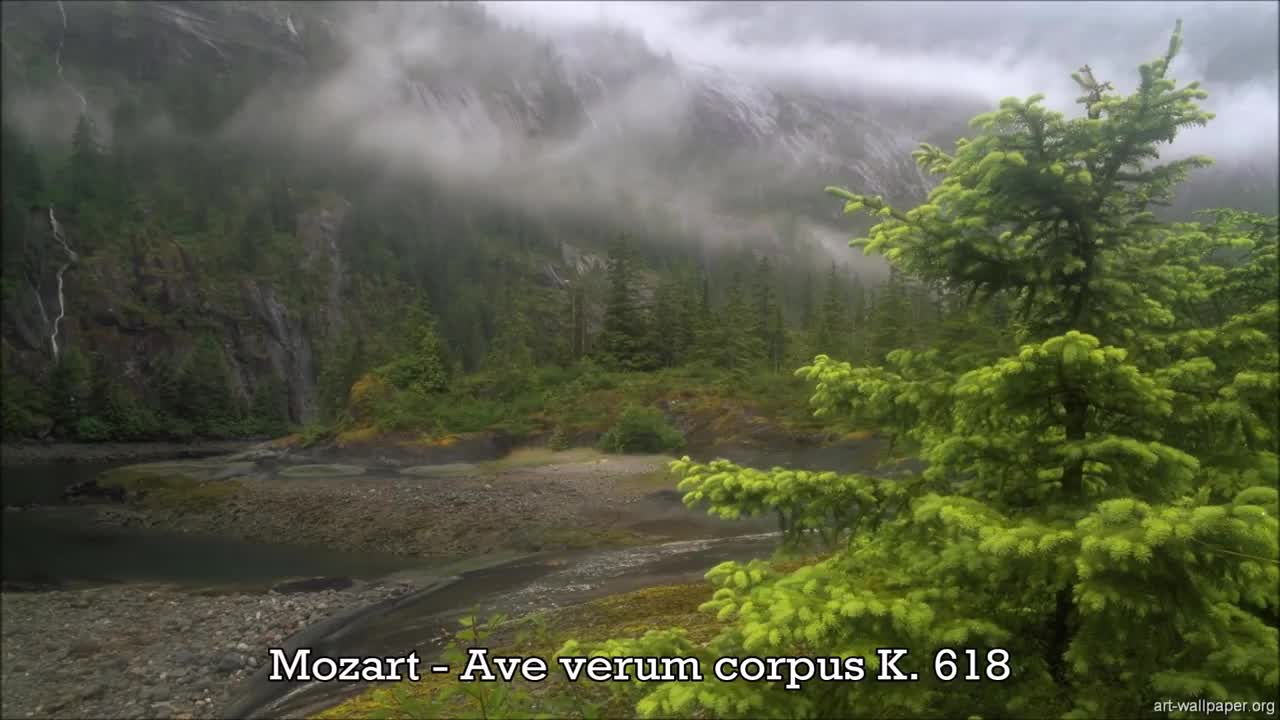Premium Only Content

Mozart Ave verum corpus K 618_v720P
Ave verum corpus (Hail, true body), (K. 618), is a motet in D major composed by Wolfgang Amadeus Mozart in 1791. It is a setting of the Latin hymn Ave verum corpus. Mozart wrote it for Anton Stoll, a friend who was the church musician of St. Stephan in Baden bei Wien. The motet was composed for the feast of Corpus Christi; the autograph is dated 17 June 1791. It is scored for SATB choir, string instruments and organ.
Mozart composed the motet in 1791 in the middle of writing his opera Die Zauberflöte.[1] He wrote it while visiting his wife Constanze, who was pregnant with their sixth child and staying in the spa Baden bei Wien.[1] Mozart set the 14th century Eucharistic hymn in Latin "Ave verum corpus". He wrote the motet for Anton Stoll, a friend of his and of Joseph Haydn.[2] Stoll was the musical director of the parish St. Stephan, Baden.[3] The setting was composed to celebrate the feast of Corpus Christi; the autograph is dated 17 June 1791. (The Feast of Corpus Christi falls on the Thursday following Trinity Sunday, and in 1791 was observed on May 25.) The composition is only forty-six bars long and is scored for SATB choir, string instruments, and organ. Mozart's manuscript contains minimal directions, with only a single sotto voce marking at the beginning.
The motet was composed less than six months before Mozart's death.[2] It foreshadows "aspects of the Requiem such as declamatory gesture, textures, and integration of forward- and backward-looking stylistic elements".[4] While the Requiem is a dramatic composition, the motet expresses the Eucharistic thoughts with simple means, suited for the church choir in a small town.[2][5]
Franz Liszt quotes Mozart's motet in the piano piece Evocation à la Chapelle Sixtine.[6] Pyotr Ilyich Tchaikovsky incorporates an orchestration of Liszt's transcription in his fourth orchestral suite, Mozartiana, Op. 61.
Mozart - Ave verum corpus K. 618
-
 18:25
18:25
Jennifer N. Campbell
3 years agoMozart's Ave Verum Corpus - Music Musings Episode 13
593 -
 0:05
0:05
edseed
3 years agoAquarium at Corpus Christi
22 -
 4:23
4:23
Jasonwalkermusic
3 years ago $0.01 earnedMozart symphony no 8 mvt 1 1768
77 -
 3:50
3:50
Jasonwalkermusic
3 years agoMozart march in d k 62 1772
41 -
 3:16
3:16
TragicBeatzs
3 years agoWolfgang Amadeus Mozart piano tutorial
67 -
 6:29
6:29
BIG NEM
19 hours agoCultivating God Mode: Ancient Taoist NoFap Practices
17.4K6 -
 30:53
30:53
Uncommon Sense In Current Times
1 day ago $2.93 earned"Pardon or Peril? How Biden’s Clemency Actions Could Backfire"
26.9K2 -
 40:01
40:01
CarlCrusher
17 hours agoSkinwalker Encounters in the Haunted Canyons of Magic Mesa - ep 4
31.1K2 -
 59:44
59:44
PMG
1 day ago $3.32 earned"BETRAYAL - Johnson's New Spending Bill EXPANDS COVID Plandemic Powers"
43.9K14 -
 6:48:50
6:48:50
Akademiks
16 hours agoKendrick Lamar and SZA disses Drake and BIG AK? HOLD UP! Diddy, Durk, JayZ update. Travis Hunter RUN
166K28